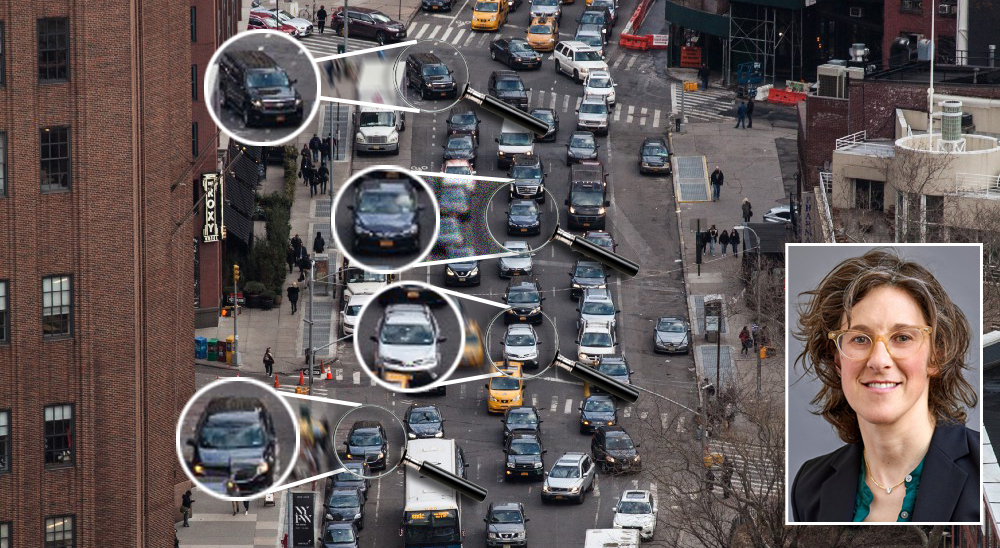Streetsblog is a non-profit newsroom devoted to covering the fight for livable cities. When we cover big, fast-moving stories like congestion pricing we kindly implore our readers to show some support to help fund our coverage. Click here if you can help. Thanks.
The editors
We cannot lose sight of the congestion aspect of congestion pricing. In the days since Gov. Hochul indefinitely suspended the tolling plan slated to begin June 30, she has floated several ideas for replacing the funding — payroll tax, a loan from the general fund, imagination. But even if she can find a way to fund those desperately needed MTA projects, there’s one thing that money will not do – reduce the number of cars driving into Manhattan below 60th Street.
Congestion is universally hated. Yet it keeps rising because city officials refuse to pursue bold strategies that would disincentivize car ownership and make other modes more attractive and feasible. There are 100,000 new cars in the city since the pandemic, and 223,500 more overall since 2012, as Streetsblog has reported. Data show that vehicles have never moved more slowly in New York City. We’re trending in the wrong direction, and it’s not a petty annoyance. The effects — long commutes, slow emergency response times, record traffic death and injury, noise pollution, frustration and anger, lost wages and profits, and climate crisis — are disastrous.
The governor herself has acknowledged that congestion creates stress, anxiety, and time away from family and friends. Not to mention the cost. Congestion costs us about $20 billion a year — "I happen to think we can do a lot better things with $20 billion, don’t you?” Hochul joked back when she was a champion of congestion pricing — yet somehow the governor forgot that last week.
Lest we forget: Congestion pricing was projected to lessen congestion in the zone by 17 percent. Elected leaders may indeed find alternate sources of funding for transit, but none will liberate New Yorkers from our spiral of ever-increasing gridlock. Even the most well-funded bus service can’t run on time if it’s stuck in standstill traffic.
The governor claimed that she had to “pause” congestion pricing because New York’s recovery is too tenuous. In fact, she has it completely backward. Congestion pricing will be a boon to our economy. It will allow us to repurpose streets to make them more pedestrian friendly and draw visitors to the area. As European cities have long proven that pleasant, quiet, stress-free commercial corridors — in short, places where people want to linger rather than rush through — are the foundation of a strong economy.
Reducing congestion is a life and death issue. Crowded streets lead to more crashes and more reckless driving. Serious injuries went up 9 percent in 2023 and now nearly one in three New Yorkers have been injured or killed in traffic violence. So far this year, 52 pedestrians have been killed — and 20,648 people have been injured in crashes, up 4 percent from the same period last year, according to city stats.
We can redesign our streets to slow traffic and protect pedestrians, but nothing will be as impactful as simply reducing the number of cars on the street. Congestion pricing will do that.
This is not an imaginary or an invisible problem. The city Department of Transportation is aware of it, state DOT is aware of it. So is Gov. Hochul, the state legislature, the City Council, and the Adams administration. That’s why congestion pricing was voted into law five years ago and put through rigorous public and environmental review — elected officials answered an urgent call to reverse decades of disastrous car-centric policies and ultimately improve the state of the city.
I happen to think that’s their job, don't you?
That call is still urgent and we cannot simply wish away congestion, traffic violence, and a climate crisis. We need decision makers willing to act, to follow through on bold policies that solve current problems while setting us up for a better future. But change is hard. Moving forward with congestion pricing will demand that drivers consider the cost, financial and social, of bringing a vehicle into an overly crowded island with far too many competing uses to truly accommodate a lot of driving. One of congestion pricing’s greatest benefits is that it asks New Yorkers to stop and think, "Do I need to drive into the busiest, most transit-rich part of the city today"? Most of us will find a checkmark next to at least one of these:
- __I can take the bus (333 bus routes)
- __I can take the subway (472 subway stations)
- __I can take commuter rail (20 lines serving 250 stations across Connecticut, New Jersey, and New York)
- __I can drive later at night with the discount ($3.75)
- __I can walk (12,000 miles of sidewalks)
- __I can bike (180 miles of protected bike lanes)
Reducing “extra” driving will free up our streets for those New Yorkers who do need to get where they’re going by car – and alleviate some of the dangerous and blighting effects of car-clogged streets. The simple fact is that congestion is a blight on our city. It diminishes our street experience, threatens and claims lives, damages our climate, and precludes every other people-centered use of public space. Fixing that mess is a worthy cause all on its own and one that we cannot afford to get lost in the shuffle.






